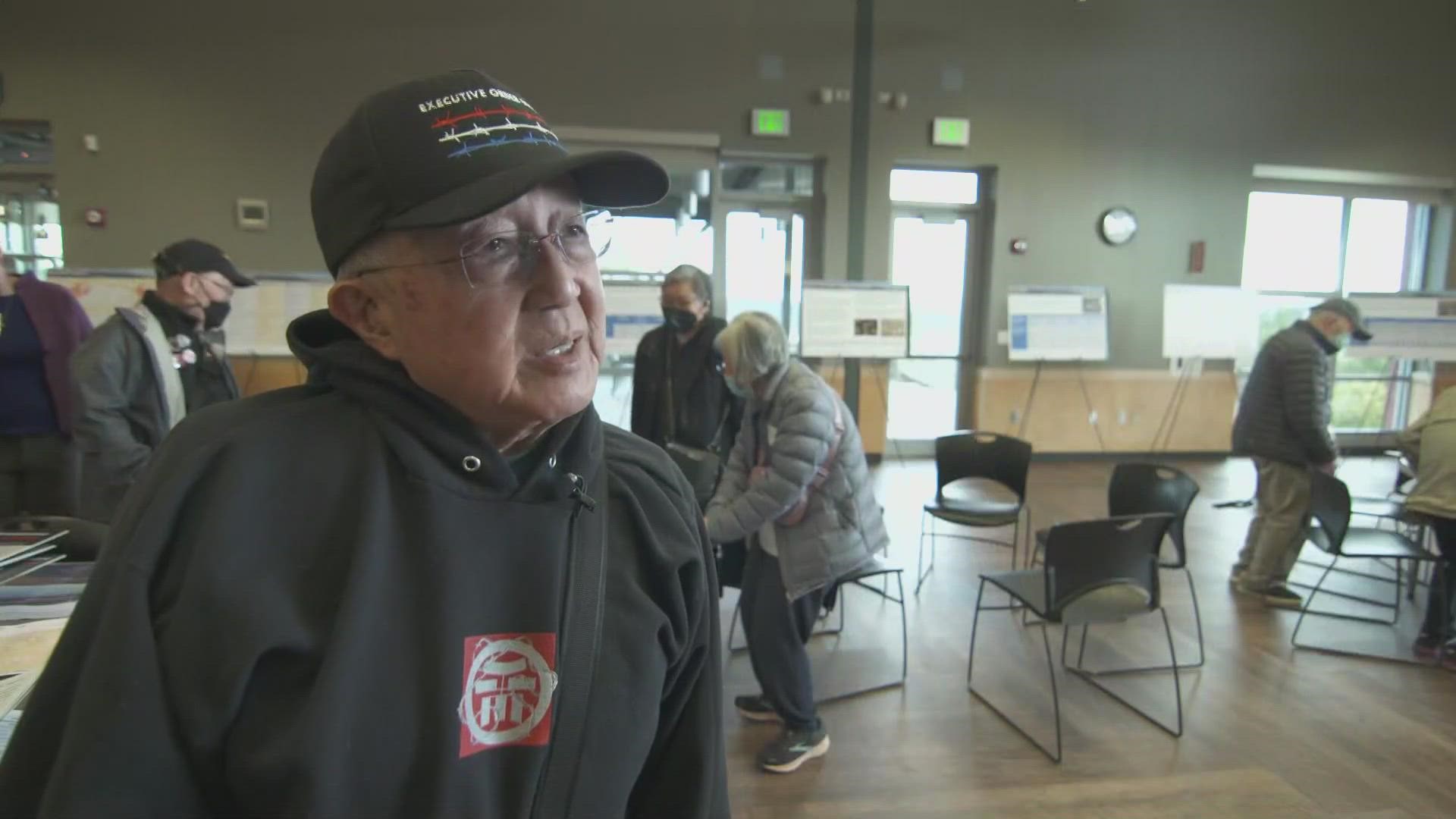SEATTLE — It’s a clash between honoring history and sustainable energy.
Members of Seattle’s Japanese community say a proposal to build wind turbines around an infamous World War II internment camp in southern Idaho would desecrate what they consider "hallowed ground."
Lawrence Matsuda was born a prisoner.
“This is me as a as a baby. I was born in Minidoka, in the concentration camp,” said Matsuda, holding up a black and white, enlarged baby photo of himself taken inside Minidoka Relocation Camp.
“There aren't too many of us [survivors] left. OK? The only ones that are left are the children, you know?” said Paul Tomita, 84, who was 4 years old when his family was forced into Minidoka.
More than 80 years ago, the first of around 13,000 Japanese-Americans were sent to the Minidoka War Relocation Center in southern Idaho. It was one of 10 internment camps across the United States opened to "relocate" people of Japanese ancestry after the bombing of Pearl Harbor during World War II.
“Our only crime was we had Japanese blood. We were not traitors. We were not insurrectionist. We did nothing. Our crime was our face,” said Tomita.
Today Minidoka is a national historic site, dedicated to reminding people about the fragility of civil rights.
“I've been there about six times. I feel the spirits of the people who walk the land and were incarcerated unjustly and the 400 people who were buried there,” said Matsuda.
“I take a pilgrimage there every year. That's our sacred land. We suffered there. We died there,” said Tomita.
Matsuda and Tomita were among dozens of Japanese Americans who attended an open house Thursday organized by the Department of Land Management regarding changes to the landscape around Minidoka.
Minidoka’s skyline could soon be filled with massive wind turbines.
A New York-based private equity company is working with the federal government to build a wind farm to the surrounding land. The project could be anywhere between 2 to 5 miles away from Minidoka.
“One of the key priorities for the Department of Interior is to increase our renewable energy production. And so this this project is designed to do just that,” said Heather Tiel-Nelson with the Bureau of Land Management.
The proposed Lava Ridge wind project would include up to 400 wind turbines.
The turbines could be up to 740 feet tall.
“I think it will desecrate the site to put 400 “space needles” around the National Historic Site, which stands for justice and liberty,” said Matsuda.
“If it were built as proposed, it could actually produce enough energy to power 350,000 homes,” said Tiel-Nelson, who added the bureau has received more than 2,500 comments regarding the project so far. She says based on that feedback, the bureau has brought forth several alternate proposals, some of which move the wind turbines further from Minidoka.
But they aren’t changing the hearts and minds of those who were imprisoned on that land 80 years ago.
“They could take their windmill farms elsewhere, but we can't take Minidoka anywhere else,” said Tomita.
The public comment period for the Lava Ridge wind project closes on April 20th. There are several ways to submit a comment:
- Email it to BLM_ID_LavaRidge@BLM.gov
- Website- Go to the BLM’s ePlanning project site at https://eplanning.blm.gov/eplanning-ui/project/2013782/510
- U.S. Mail – send comment to:
Lava Ridge Wind Project EIS
Kasey Prestwich, Project Manager,
BLM Shoshone Field Office
400 West F Street,
Shoshone, ID 83352

